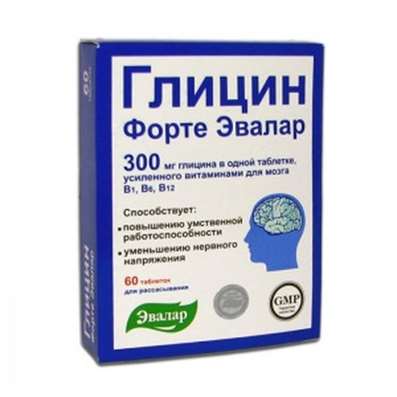Classic studies of Memory Organization
07 Nov 2016
Psychologist Dr. Doping talks about Ebbinghaus and Bartlett’s experiments, associative memory and its laws of schematic organization.
Psychologists primarily interested in one question: how our experience is organized in the memory of the form in which it is to be recorded and how it is extracted from there? And it so happened that the first for quite a long time psychology was under English influence, especially the direction, which was called associationism. Accordingly, the main mechanism for securing experience in mind, it was considered a mechanism for extracting association. Two experiences, two elements of our experience are called associates if they once met in our experience together and with the appearance of one of them, we immediately remember, learn from the other memory. Accordingly, the more often they met together before, the stronger the association, the easier the experience retrieved. Associations are different. They can be based on similarity: We have a friend who is very similar to the lamb, and the lamb we see immediately recall the familiar. There may be a contrast: we say "black" and we have the first thing in my head pops up the word "white." But the most frequent types of associations - a contiguity association in space or in time, when the two elements of our experience there at the same time quite often - for example, we see the next stall and meat stall selling bread, but then the disappearance of one of them immediately makes us wonder: and where he? Similarly, the association arranged for temporary adjacency: we know that, if struck by lightning, it should thunder thunder, we are waiting for the onset of this event, because so they are stored in memory.
And just this represents a major mechanism of memory the first psychologist who at the end of the XIX century it was engaged in scientific research, free German psychologist Hermann Ebbinghaus. Ironically, it was a time when psychology as a science rose in Germany, but Ebbinghaus left for England. Perhaps this influenced his research, he's engaged in the study of memory. And he tried to do? I am trying to build a memory of psychology as a precise, rigorous science, which would be examined as are formed and retrieved entirely new association. But with the memory problem is this: no matter what we remembered, it is associated with the entire past experience. We have something to read, something to see, and it is already something similar, causing some associations in all our past experience. Accordingly, Ebbinghaus had to come up with a stimulus material and methods that would allow to examine memory in its purest form. And it is quite cleverly twisted, using as stimulus material so-called nonsense syllables. These were the two consonants with a vowel in the middle who allegedly did not cause any associations, although the question is, of course, controversial, too. Something like bok or yat. And then Ebbinghaus came up with procedures that would allow him to explore how these nonsense syllables are stored in memory and retrieved from there. And he came up with different learning procedures, such as a one-time reading of a series of nonsense syllables with his subsequent recollection.
To improve your memory you can with the help of Semax, Cortexin, Cogitum, Phenylpiracetam, Vitamin B12 (Cyanocobalamin) injection.
What can we learn from this? How many items we can remember after such a single presentation? Ebbinghaus have happened six or seven elements of what would become the echoes of a magic number 7 ± 2. And what are the elements of this series we remember best? It turned out that the first and the last, and those who are in the middle, worse. But the main procedures Ebbinghaus were, of course, memorizing procedures to precise, error-free playback. Accordingly, we could see? How many times do you need to read a series of nonsense syllables in order to remember it. And it turned out, of course, that the longer the series, the more repetitions you need. The more we have learned a number of repeat, the easier it will be to extract it or re-memorize later. But the most famous procedure Ebbinghaus began re-learning procedure, when a series of nonsense syllables to memorize error-free playback. Then I take a break from an hour to a week, and the same number to memorize a second time. And, using this method, Ebbinghaus was his most famous result, which is still played in all textbooks on the psychology of memory - the so-called "forgetting curve", which, in fact, was built by re-learning series, in fact, packs of 8 rows of 13 nonsense syllables at different time intervals. And Ebbinghaus found that the greatest loss of assimilated material is, in fact, within the first hour. Within 20 minutes saving when re-memorizing, that is, the number of repetitions that we need to do when we teach the material a second time, about 60% in an hour - only 40%. And then the schedule becomes smoother - somewhere in 6-7 days savings of 20% with a gradual slowing of the process of forgetting.
On the one hand, it was a very interesting study, which allowed to find out not only these specific laws, but also more general. For example, Ebbinghaus found that if we are interested in to learn, we learn better, that is, the interest and attention improves memorization results. If we compare the meaningless and meaningful material - for example, such series of syllables and Byron's poem "Don Juan" - that meaningful learning material is 9-10 times better. He found that the efficiency of delivery of memorization, distributed in time than made in one go. In fact, it was not really he, and his successor, Adolf Jost. This law is called – Jost’s law. But there is one problem: Ebbinghaus studied one type of memory, which practically does not occur in our lives - it is an arbitrary immediate memorization. If we think about it, where we need it, it turns out that, in fact, anywhere. We rarely memorize lists, and if it lists, they usually meaningful. And pure patterns of memory - it's great, but in the life of the memory it does not exist in this form. In which A? First of all, in the form of a story: we have something to learn, something to see, something to hear and share with someone else. And it is this memory undertook to study in the 30-ies of XX century British psychologist Sir Frederic Charles Bartlett. Knighthood he received it for his merits in the field of psychology, and his most famous book, and not translated into the Russian language - a book in 1932 entitled «Remembering», where he just tried to study the patterns of memory story and found that it is arranged is not the case, as suggested by Ebbinghaus. First of all, Bartlett said that any story or picture, or event exists in our experience in three ways, independently of us, at a time when we take this story and looked at the picture and encode memory, the moment when we extract it that remembered. These three stories are fundamentally different from each other.
As this research and how to prove it? There Bartlett gave a very good hint of his then-boyfriend, the future founder of cybernetics, Norbert Wiener. He threw him into the broken telephone game, or "Russian Scandal” as it is called in English. And Bartlett on this basis built two methods: the method of repeat playback, when a person, for example, making out a picture or listening to some story, retold the content of an hour later, a day later, a week later, a month later, and so on, and the method of successive plays - the same known to us spoiled phone when a man, after listening to a story or making out the picture, recited its contents to another, the other - the third, the third - the fourth and so on. Bartlett conducted such experiments, including lectures, I also love to do so. And what he found? What Ebbinghaus described associative laws do not work! Each time you play the story is reduced, and reduced non-random way: lost some details, lost the title, the names are lost. Bartlett used the intricate stories, he used Native American legends, where there were many unknown European man, illogical, and found that, in addition to the loss of the decorative details in the story when the playback sequence lines up a certain logic. Some events are reversed, the man adds explanations, respectively, following their transfer. And Bartlett described the special phenomenon changes the story in accordance with cultural norms or conventions, so this phenomenon is called conventionalization. And somewhere to the ninth-tenth retelling of the story is already fixed and takes the form, in which more fully and accurately reproduced specific or all of the participants in the experiment. Bartlett conjectured that, in essence, the story comes to a circuit that is behind it, and perhaps for some similar stories, allows us to remember the rest.
This concept scheme Bartlett suggested as the main mechanism of our memory of the organization, defining it as a package of knowledge, or the active form of the organization of past experiences and past experiences, from which we can effectively capture and effectively use those or other knowledge gained in life. In addition, he found that, in addition to this conceptual organization that determines the interpretation of impressions, and their reproduction, to the memory of our motivation influences. For example, when he read a story about the Indians called "War of the spirits" of students who could summon to the front during the war, he found that these students reproduce a local episode about how one of the Indians said that "there is, I will not go to war, my parents house, "and so on. In all other cases, the same episode easily fell into other era. But the most important legacy of Bartlett is, of course, the very concept of the scheme, which will be central to cognitive psychology. Cognitive psychologists choose different types of schemes: schemes scripts associated with a typical sequence of events in a given situation (for example, going to a restaurant or listening to lectures at the university); circuit prototypes associated with the fixation of a typical representative of a particular category. For example, what is a dog that is a bird? Question generalized, however, we have a generalized representation that allows us to identify the object as a bird and describe the bird that we remember. Or so-called cognitive map is schema that store our understanding of certain fragments of our environment. Anyway, when cognitive psychologists began to explore the long-term memory, the concept of the scheme introduced by Bartlett, has become for them a matter of fact, the main and central concept. Thus, if Hermann Ebbinghaus studied memory as reproduction, that is, literally, an exact reproduction of the material that has been stored in memory, the Bartlett studied the memory as reconstruction, ie restoration of the story about a particular event or impression of our lives. And patterns of reconstruction and reproduction differ fundamentally.

 Cart
Cart





